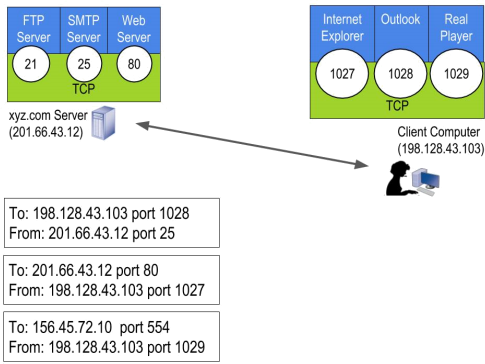COMP2410/COMP6340_Semester 1 Networked Information Systems Semester 1 - Mid-term exam, 2019
Hello, dear friend, you can consult us at any time if you have any questions, add WeChat: daixieit
EXAMINATION
Semester 1 - Mid-term exam, 2019
COMP2410/COMP6340_Semester 1 Networked Information Systems
SECTION A. Both COMP2410 and COMP6340 students.
Answer the following question (25 points; 25% total). Note that marking criteria for the COMP2410 students and COMP6340 students may differ.
1.
Describe the Internet Layers model as a table with the following four columns: 1) the layer’s name, 2) its purpose, 3) a common standard/protocol relevant to this layer, and 4) an example of a functionality that relates to the purpose of this layer. Remember to have a row for each layer. Format your full answer as a max 1-page table.
SECTION B. Both COMP2410 and COMP6340 students.
Answer the following two questions (25 + 25 = 50 points; 25% + 25% = 50% total). Format each answer as a 300-500-word essay. You are encouraged to include figures and tables to support your free-form text answer. Remember to demonstrate your academic communication skills. Note that marking criteria for the COMP2410 students and COMP6340 students may differ.
2.
Explain how webmail works, using a 3-tier, thin client.
3.
Analyse the three requests below in the context of the server and client of the figure below and as part of this analysis identify, explain, and relate 10 concepts, which are relevant to the Week 1-6 contents of the unit.

SECTION C. Both COMP2410 and COMP6340 students.
Answer the following question (25 points; 25% total). Format your answer as a 500-700 word essay. You are encouraged to include figures and tables to support your free-form text answer. Remember to demonstrate your academic communication skills and document your assumptions. The case is synthetic (yet realistic). Note that marking criteria for the COMP2410 students and COMP6340 students may differ.
Describe, compare, and contrast the traditional method and building-block method for network design in the context their application to the following case:
Shangri-La’s Rasa Sayang Resort and Spa is a five-star luxury resort hotel located on the scenic Batu Feringgi Beach in Penang, Malaysia . The resort has two main buildings, the 189- room Garden Wing and the 115-room Rasa Wing, with an additional 11 private spa villas . Over the years, the resort had installed three separate networks: one for the resort’s operations, one for its point-of-sales system, and one for wider Internet access for guests . As part of a multi-million-dollar renovation, the resort decided to upgrade its network to gigabit speeds and to offer wireless Internet access to its guests . Rather than building three separate networks again, it decided to build one network using virtual local area networks (VLANs) . The resort installed 12 wireless access points, 24 smaller VLAN switches, and 2 larger core VLAN switches .
2023-06-20